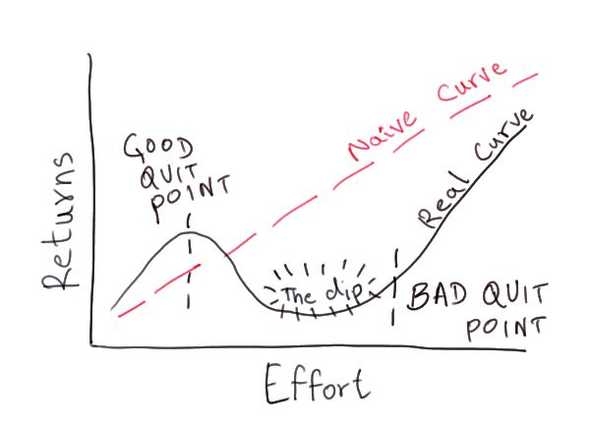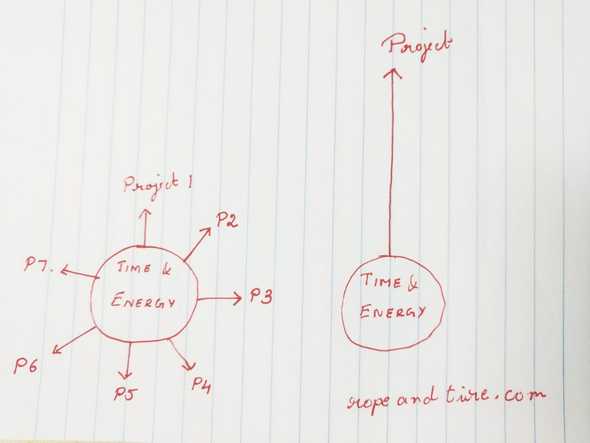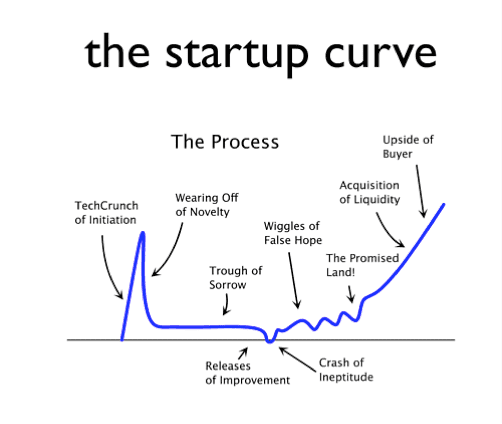2 week experiments and 6 week projects
I treat my entire life as 2 week experiments and 6 month projects because, and maybe this is just the way I cope with life and decision making, but I feel that if you make a 5 or 10 year plan that you can reliably hit, almost by definition, you have to set a plan that is below your current capabilities. Like, if you are an A student you must set a C+ plan for it to be 100% achievable. That I think is just a great way to paint yourself into a very unattractive corner. – Tim Ferriss in his Podcast #175: How to cage the monkey mind (45:08)
I tried this approach during the second half of 2016. It took me 3 months to iron out the kinks and come up with a system which worked for me. I eventually paired it with Trello and journaling. My productivity on side-projects increased exponentially. Prioritizing became simpler, easier. I was happier, more focused. And I spent the same amount of time as I usually would.
Why did this system work so well for me? Not for the reason that Tim is talking about.
To see why it helped me, I had to first identify the my pitfalls.
-
I like shiny new projects more than those I am currently working on.
-
I am unable to limit myself to just one project at a time. I start new projects whenever I have a good idea. The good ideas seem to occur more when when I am in “the Dip” (Seth Godin terminology) or entering the “Trough of Sorrow” (Paul Graham terminology) of a certain project.
 Seth Godin’s Dip Curve
Seth Godin’s Dip Curve -
I end up working on too many projects at the same time
-
When I’m working on multiple projects I have an illusion of productivity and it feels good.
-
I end up scattering my energy.
 Too many projects at the same time
Too many projects at the same time -
I have trouble finishing projects
-
I am unable to let go the projects that I cannot do – because of time or interest. That would mean accepting that I’m not productive. Who likes that?
-
So I am on a spiral of ever-increasing projects and ever-decreasing productivity.
My system helped me trick myself around the problems.
- I commit to an idea for 2 weeks – just 2 weeks. This is not threatening to the other ideas.
- At the start, I decide what the success criteria for this experiment are.
- At the end of 2 weeks, if I do not meet the success criteria, the idea is abandoned. This helps with the ever-increasing projects problem.
- Two weeks is just enough – I can hold back the temptation to postpone starting a new project. Invariably, this temptation hits me at the start of week one. I tell myself “Surely, you can wait for one more week?”, and I invariable do.
- Two weeks is also the “good quit point” in Seth Godin’s curve. It is long enough to verify my interest, but not long enough to get suckered by the “sunk cost fallacy”.
- And if the idea is really great, the next 2-week project can be a continuation of this great idea.
…
Initially, the “2 week experiment” approach by itself didn’t work well. It started to focus me once I started journaling about the idea in mind: making notes, exploring that idea and exploring why I was drawn to that idea. Once I added Trello to this mix, it really made me productive.
At the start of the 2-week idea period, I create a card in Trello. This card has the project name, the 2 week time period and my pre-determined success criteria. In its description, it also has a living list of subtasks: the idea broken down into many smaller atomic tasks. This list is a starting point. I update this list as and when these atomic tasks change, new ones are needed or they become obsolete.
I also mark the completed tasks and rearrange the order of tasks so that they are always in sequence — this way, I always know what’s next. Trello “2-week card” for a new project – “Redesign website”
So what about the 6-month project? I have one ongoing project — the recording of Moral Letters vol 2 for Librivox. I I can evaluate the 6-month project schedule when I finish it.
January 04, 2017
